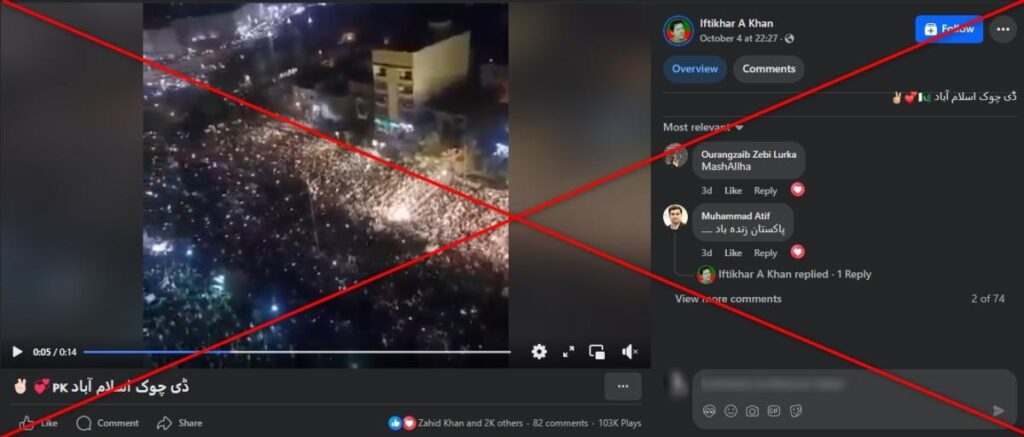In October 2024, supporters of jailed former Pakistani Prime Minister Imran Khan attempted to stage significant protests in Islamabad, reflecting ongoing turmoil in the country following his ouster in April 2022. Mixed with genuine demonstrations were instances of misinformation, exemplified by a misleading video that circulated widely on social media. This video, purporting to show recent protests at D-Chowk, a strategic area in Islamabad, was actually from Karachi and taken in April 2022, highlighting how misinformation can complicate public perception during political crises.
The specific video received tens of thousands of views and was misrepresented as evidence of large-scale protests occurring in Islamabad. In reality, the image depicted supporters gathering at night on a wide road in Karachi, which has been a focal point for Khan’s supporters since his party, Pakistan Tehreek-e-Insaf (PTI), has actively sought to challenge the government’s authority following Khan’s imprisonment on various charges in 2023. Khan and his supporters argue that these charges are politically motivated attempts to prevent him from reclaiming power.
As PTI mobilized support, initiating a movement towards Islamabad from Khan’s stronghold in Khyber Pakhtunkhwa, the government responded with countermeasures, including deploying troops and erecting shipping container roadblocks. These actions echo a long-standing pattern of government suppression against political dissent, particularly towards Khan and his PTI party, which have faced increasing pressure since his ouster. Despite such measures, PTI’s gatherings have continued in a demonstration of their resilience and determination to keep Khan’s political aspirations alive.
Upon further investigation into the viral video, journalists conducted reverse image searches that traced its origins back to earlier protests against Khan’s ouster in April 2022. The specific protests were in response to a no-confidence motion that led to his removal from office, indicating a continuity of public support for Khan among sections of the populace who feel disenfranchised by the political establishment. The analysis confirmed that both the visual context and the accompanying text in the misleading post were completely disconnected from the actual events taking place in Islamabad in 2024.
The credibility of social media and news outlets has faced challenges as misinformation often spreads faster than corrections can catch up. PTI’s communications during the April 2022 protests included rhetorical affirmations of loyalty to Khan and calls for a self-reliant Pakistan, sentiments that resonated with the public at the time. However, the manipulation of these past visuals to present a false narrative regarding recent events is illustrative of the complex dynamics in Pakistani politics, where visual and digital information play powerful roles in shaping public discourse.
AFP and other fact-checkers have repeatedly engaged with the need to debunk misinformation surrounding Imran Khan, navigating a landscape where political narratives are often intertwined with media representation. The broader implications are significant: misinformation can galvanize public support or incite unrest, complicating the governmental narrative and affecting the political climate. As Pakistan continues to grapple with the aftermath of Khan’s ouster and the ongoing turmoil within its political framework, understanding the mechanisms of information dissemination is crucial for both supporters and opponents alike.

